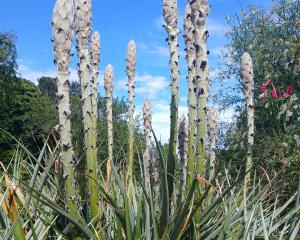Raised vegetable beds can solve problems, says Gillian Vine.
Raised beds are becoming increasingly popular and with good reason.
They are an ideal choice for gardeners who have downsized or no longer have the physical ability to cope with large high-maintenance beds, but there are other advantages, too.
Poor soil?
Install a raised bed and fill it with manure, compost and clean soil or cheap potting mix to give plants optimum growing conditions.
If the base is heavy clay, sprinkle the ground with gypsum before filling the garden. Broken bricks and rubble can go at the bottom of deep beds.
Frustrated with sour, poorly drained ground?Raised beds drain better, especially if the soil mix has fine river sand added.
Cold climate?
Raised beds are warmer, so plants get off to an earlier start in spring.
Short of space?
Timber-edged beds with wide tops can provide outdoor seating, while the small plots lend themselves to more intense cultivation along the lines Mel Bartholomew recommends in his book, Square Metre Gardening. Crop rotation is simpler, too.
Little time for gardening?
Maintenance is easier, as tackling a small plot beats trying to cope with a big area in one session.
Boggy garden?
Paths between beds keep everything neat looking and overcome soggy areas.
Chip or bark paths, laid over weedmat or old carpet, are a cheaper option than permanent materials like concrete or pavers.
If the garden is reconfigured in the future, chip and bark paths are easier to lift.
On the move?
In a rental property, a movable bed (garden centres sell kitset ones) can be taken when you shift.
What are the negatives?
It is vital to be vigilant about watering, especially in hot, dry weather.
The soil level in raised beds drops noticeably in a season, especially where vegetables are grown.
This is easily corrected by adding compost to empty plots, which also helps maintain soil quality.
Lighter wooden edging or corrugated iron may be cheap but will break down long before more durable materials show signs of wear.
Stacked tyres are now considered unhealthy because of the chemicals used in rubber production.
Choose your materials
Raised beds can be made from various materials: wood, stone, brick, corrugated iron, tyres or turf.
•Wood can be a cheap choice, especially if you use recycled timber, but an issue may be whether it has been treated with chemicals. Old railway sleepers, made of West Australian jarrah, are long-lasting but relatively costly. Untreated macrocarpa is a good alternative. Kitset beds of wood are fairly affordable but many are made from seconds, full of knots and flaws, which reduces the lifespan.
•Stone can look fantastic and attending a course on how to construct a stone wall will pay dividends.
•Bricks are easy to work with and fairly economical. Cheap (or even free) used bricks are sometimes offered at demolition sites.
•Corrugated iron can be folded and used as an edging but cutting it to size presents challenges.
•Stacked tyres are still popular for growing potatoes, strawberries and rhubarb but there is concern about the chemicals in rubber. If you have doubts about their safety for food, instead grow trailing flowers like petunias or nasturtiums in them.
•The so-called Irishman's garden is made when a lawn is to be turned into a garden. Cut out neat squares of turf, then stack around the edges to create a low wall.
•Old laundry tubs and baths make durable beds but care is needed to ensure adequate drainage. Shallow concrete frames can be used as is or stacked two deep if increased soil volume or depth is required.












